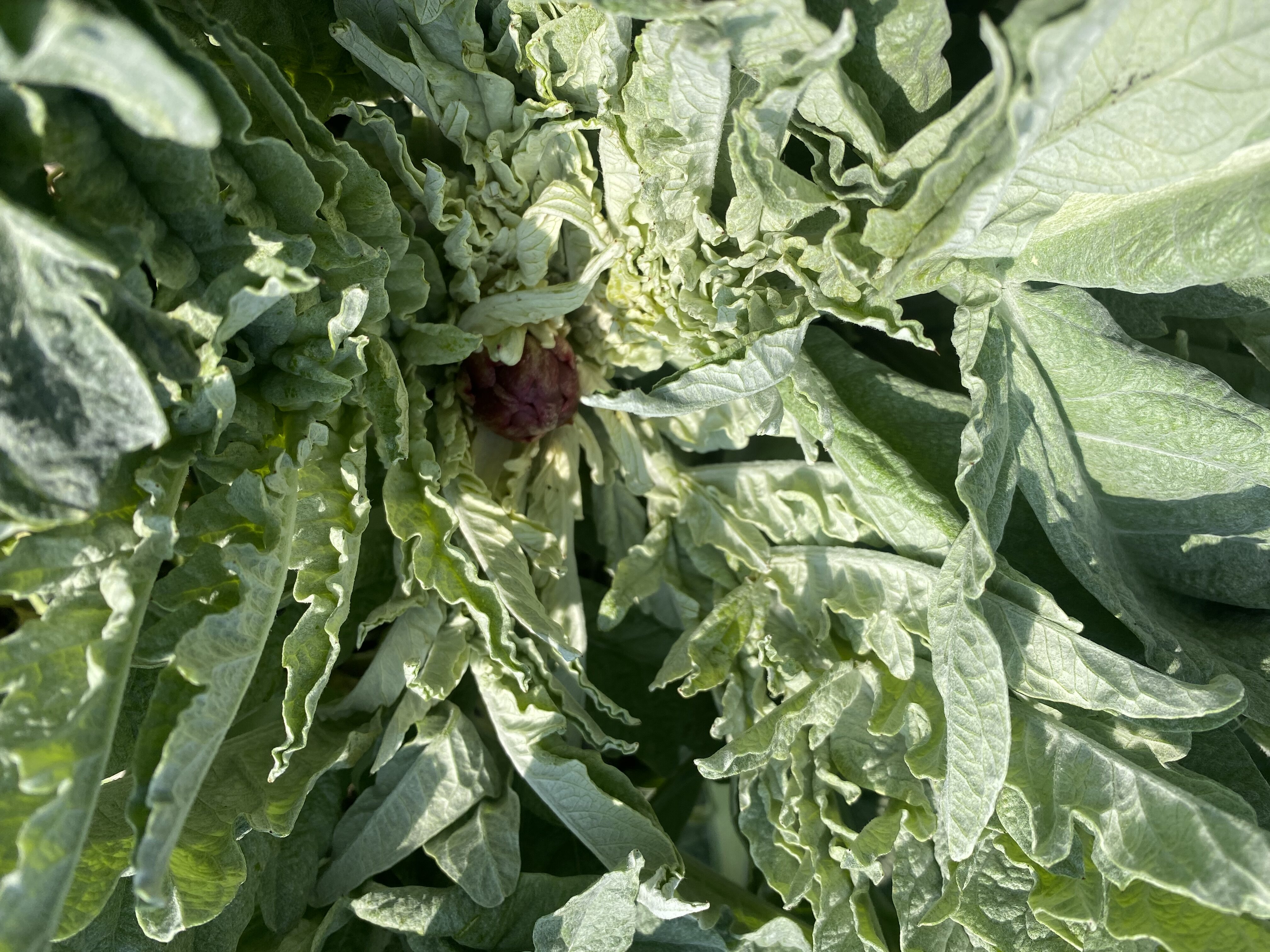
Valle San Leonardo
The Excellences of the Land
Castraùre e bòtoli
Throughout the islands of the Venice Lagoon and the wetlands and brackish areas of the Valleys and the Po Delta, castraùre and bòtoli find their unique and ideal environment to grow luxuriantly.
Known as “green pearls” for tradition, rarity, and taste, they sprout in spring for a short period between mid-April and late May. The “violet” variety grows on plants near the salty ground of the “barene,” from which it derives the typical savory flavor that distinguishes it from all other types of artichoke.
In the gastronomic tradition of those places, castraùre is prepared in markedly pleasant ways: raw, consumed in “técia alla vallesana,” as a sauce for pasta or pâté for crostini, or blanched with seed oil and vinegar, expertly mixed, before being preserved in extra virgin olive oil for longer and more enjoyable conservation. Excellent when paired with ham.
Castraùre has always been cultivated in Valle San Leonardo. Initially, there was only a small piece of land between two canals, the “colauri” of the valley, land full of marsh reeds that were difficult to contain but produced delicious fruits! Even today, cultivated in a completely natural and traditional manner in small plots between the fishponds or on the banks of the valley’s canals, castraùre continues to be unique in taste and crispness, rightfully counted among the exquisite food diversities of our beloved country.

Cardi
The “cardo” is an essential and delicious part of the artichoke plant. Also known as the heart or base of the artichoke, it is the central and tenderest part of the buds of this spiky plant.
The artichoke heart is characterized by a delicate and slightly sweet flavor, with a soft and succulent texture. It is widely used in cooking to prepare a wide range of dishes, from appetizers to side dishes to main courses.
The preparation of the artichoke heart can vary depending on culinary preferences, but it often involves removing the tougher outer leaves and cooking the heart in various ways, such as boiling, grilling, or baking. The end result is a tasty and satisfying dish that celebrates the richness and versatility of this beloved plant worldwide.

Wild asparagus
Wild asparagus is a true spring delight, sought after for its intense flavor and tender texture. These exquisite vegetables grow spontaneously in pristine locations, releasing a fresh and inviting aroma.
Characterized by thin stems and filamentous leaves, wild asparagus is known for its versatility in the kitchen. They can be harvested fresh and consumed raw in salads or as an appetizer, or cooked in a variety of ways, such as steamed, sautéed, or grilled.
Their slightly bitter taste pairs well with a wide range of ingredients, from the delicacy of eggs to the robustness of cheeses. Wild asparagus adds a touch of freshness and sophistication to any dish, making each culinary experience unique and memorable.
Additionally, wild asparagus is rich in essential nutrients, including vitamins, minerals, and antioxidants, making them not only delicious but also healthy. With their natural beauty and extraordinary flavor, wild asparagus is a culinary treasure to be appreciated during their short harvesting season.


